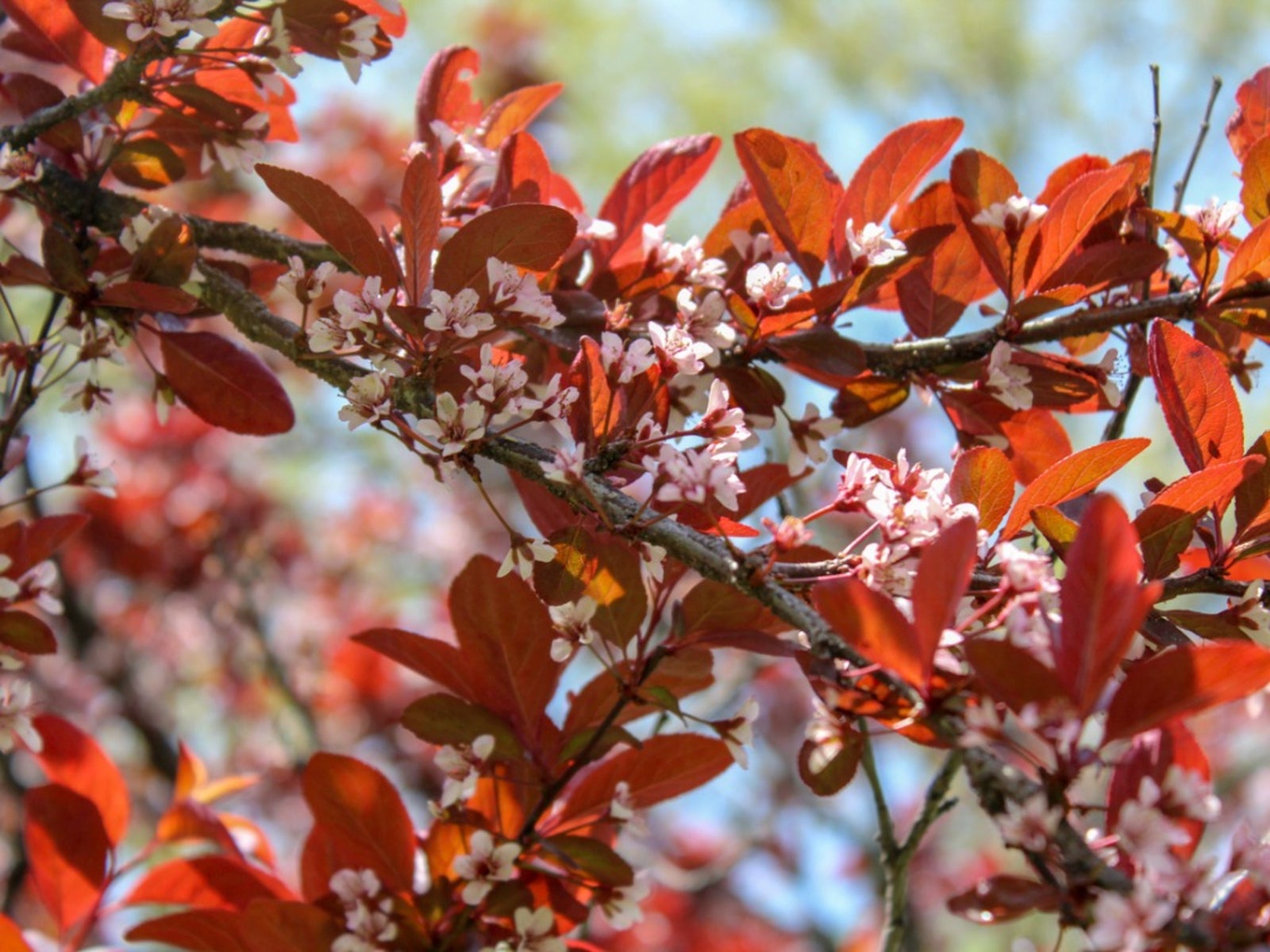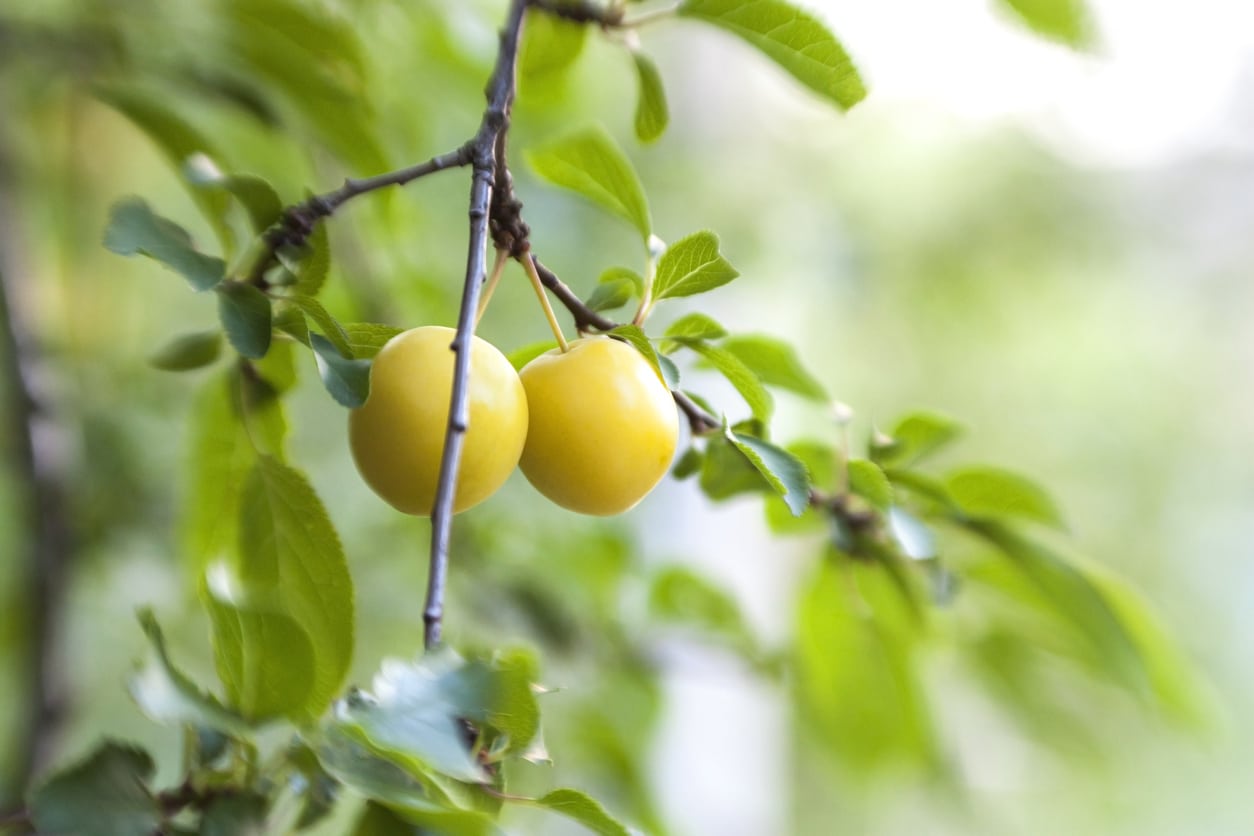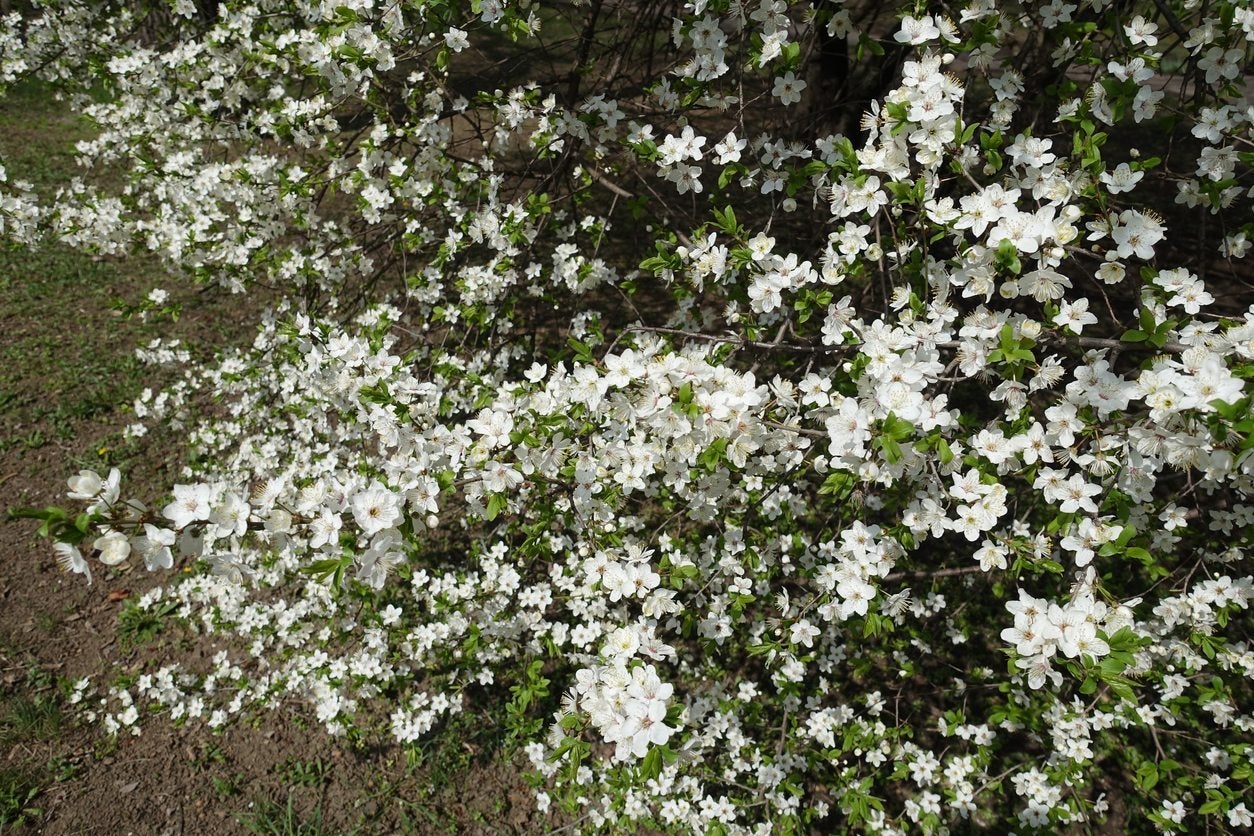Newport Plum Info: Learn How To Grow A Newport Plum Tree


According to the Arbor Day Foundation, properly placed trees in the landscape can increase property values up to 20%. While large trees can also provide us with shade, reduce heating and cooling costs, and provide beautiful texture and fall color, not every urban yard has the space for one. However, there are many small ornamental trees that can add charm, beauty, and value to small properties. As a landscape designer and garden center worker, I often suggest smaller ornamentals for these situations. Newport plum (Prunus cerasifera ‘Neportii’) is one of my first suggestions. Continue reading this article for Newport plum info and helpful tips on how to grow a Newport plum.
What is a Newport Plum Tree?
The Newport plum is a small, ornamental tree that grows 15 to 20 feet (5-6 m.) tall and wide. They are hardy in zones 4 to 9. This plum’s popular attributes are its light pink to white flowers in spring and its deep purple colored foliage throughout the spring, summer, and fall. Depending on region, rose-pink Newport plum blooms appear all over the trees rounded canopy. These buds open to pale pink to white flowers. Newport plum blooms are especially important as nectar plants for early pollinators like the mason bee and monarch butterflies migrating north for summer breeding. After the blooms fade, Newport plum trees produce small 1 inch (2.5 cm.) diameter plum fruits. Due to these small fruits, Newport plum falls into a group commonly known as cherry plum trees, and Newport plum is often referred to as Newport cherry plum. The fruit is attractive to birds, squirrels, and other small mammals, but the tree is seldom bothered by deer. Newport plum fruits can be eaten by humans as well. However, these trees are mostly grown as ornamentals for their aesthetic flowers and foliage. One specimen Newport plum in the landscape will not produce a lot of fruit anyway.
Caring for Newport Plum Trees
Newport plum trees were first introduced by the University of Minnesota in 1923. Its history beyond that has been hard to trace, but it is believed that they are native to the Middle East. Although it is not a native to the U.S., it is a popular ornamental tree throughout the country. Newport plum is rated the most cold hardy of the cherry plum trees, but it grows well in the south too. Newport plum trees grow best in full sun. They will grow in clay, loam, or sandy soil. Newport plum can tolerate slightly alkaline soil but prefer acidic soil. In acidic soil, the ovate purple foliage will achieve its best color. In spring, new foliage and branches will be a red-purple color, which will darken to a deeper purple as the foliage matures. The downside to growing this tree is that its purple foliage is very attractive to Japanese beetles. However, there are many homemade Japanese beetle remedies or natural products that can control these damaging insects without harming our beneficial pollinators.
Gardening tips, videos, info and more delivered right to your inbox!
Sign up for the Gardening Know How newsletter today and receive a free copy of our e-book "How to Grow Delicious Tomatoes".
-
 Looking For Plants To Give You The Soft And Fuzzies? Try These 5 Fuzzy Leaf Plant Options
Looking For Plants To Give You The Soft And Fuzzies? Try These 5 Fuzzy Leaf Plant OptionsLovers of texture, drama, silver foliage and tactile plants will adore these special sensory garden additions. These fuzzy leaf plant options will leave you all aglow
By Susan Albert
-
 Get Ready For A Summer Of Hummers! Grow These Full Sun Hummingbird Plants and Flowers
Get Ready For A Summer Of Hummers! Grow These Full Sun Hummingbird Plants and FlowersIf you’re lucky enough to enjoy a sunny backyard, make sure you are maxing out on your pollinator opportunities and grow these full sun hummingbird plants and flowers
By Tonya Barnett
-
Cherry Plum ‘Ruby’ Info: Learn About Ruby Cherry Plum Care
Ruby cherry plum fruit is sweeter than most cherry plums, but still has slightly tangy flavor. Try growing Ruby cherry plums for use in canning, baking and other culinary pursuits. The following article will help get you started.
By Bonnie L. Grant
-
Gypsy Cherry Plum Info – Caring For Gypsy Cherry Plum Trees
Gypsy cherry plum trees produce large, dark red fruit that looks much like a large Bing cherry. Originating in the Ukraine, cherry plum ‘Gypsy’ is a cultivar favored throughout Europe and is hardy to H6. The following Gypsy cherry plum info will help with growing this tree.
By Amy Grant
-
 Golden Sphere Cherry Plum Trees – How To Grow Golden Sphere Cherry Plums
Golden Sphere Cherry Plum Trees – How To Grow Golden Sphere Cherry PlumsIf you love plums and want to add a little variety to the landscape, try growing a Golden Sphere plum. Golden Sphere cherry plum trees bear large golden fruit about the size of an apricot that can be eaten fresh out of hand, juiced or preserved. Learn more here.
By Amy Grant
-
 Myrobalan Plum Pruning Info: How To Prune Myrobalan Cherry Plums
Myrobalan Plum Pruning Info: How To Prune Myrobalan Cherry PlumsShould I cut back Myrobalan plum? While frequent or excessively trimming a cherry plum is not recommended, it may be necessary at times. Click on the article the follows to learn when and how to prune Myrobalan cherry plums.
By Darcy Larum
-
 Cherry Plum Information – What Is A Cherry Plum Tree
Cherry Plum Information – What Is A Cherry Plum Tree?Cherry plum? a group of Asian plum trees that are commonly called cherry plum trees. It could also refer to the hybrid fruits which are literally a cross between plums and cherries. This article will explain the differences of trees commonly called cherry plums.
By Darcy Larum